
At Ensenada in Brooklyn, Luis Herrera Mixes Influences and Inspirations to Delicious Effect
When restaurateur Bryce David and chef Luis Herrera got together to revamp the vegan taco joint Black Flamingo — a nightclub and restaurant not too far from the Williamsburg Bridge — they envisioned a casual, Pacific Coast-style Mexican seafood spot with paper napkins, a raw bar, and traditional ceviches and aguachiles.
Herrera, who is from Venezuela, had begun traveling to Mexico and researching recipes in 2014 as a cook at Cosme, Enrique Olvera’s Mexican fine-dining restaurant in the Flatiron District. Since leaving Cosme in 2017, he worked at several other New York City restaurants, including Michelin-starred Blanca and Bushwick’s Outerspace. But it was Cosme that provided a stepping stone for he and David’s new concept, called Ensenada. So much so that Herrera brought in two former Cosme coworkers: general manager Jenn Muñiz and beverage director Jorsand Diaz.
- Casa Enrique Changed the Game. Cosme Aguilar Was Just Cooking Up His Dreams
- A New Generation of Mexican Chefs Is Serving Heritage (and Progress)
- New York Has Incredible Mexican Food. Here’s Where to Find It.
- A Long Road to Success: How the Owners of Aldama Found Acclaim and Community in New York City
“It was beautiful to be back together after all these years and create this beautiful project, that has a lot of base from our time at Cosme,” Herrera says. “It played a big part and provided a big inspiration to what we’re doing now.”
After Ensenada opened in early 2022, the team gently steered the concept toward a less casual feel. The staff ditched the paper napkins that began to pile up next to the aguachiles. Servers refreshed silverware and plates after every course. Diaz’s drink menu added a precise, upscale touch, featuring small-batch mezcals sourced from a wide range of Mexican states, including Puebla and Michoacán.
“I don’t want to say it’s high-end, but it’s nicer than what you can get at a little tasca or a beach in Puerto Vallarta where they give you ceviche in a plastic cup. We’re kind of in the middle,” Herrera says.
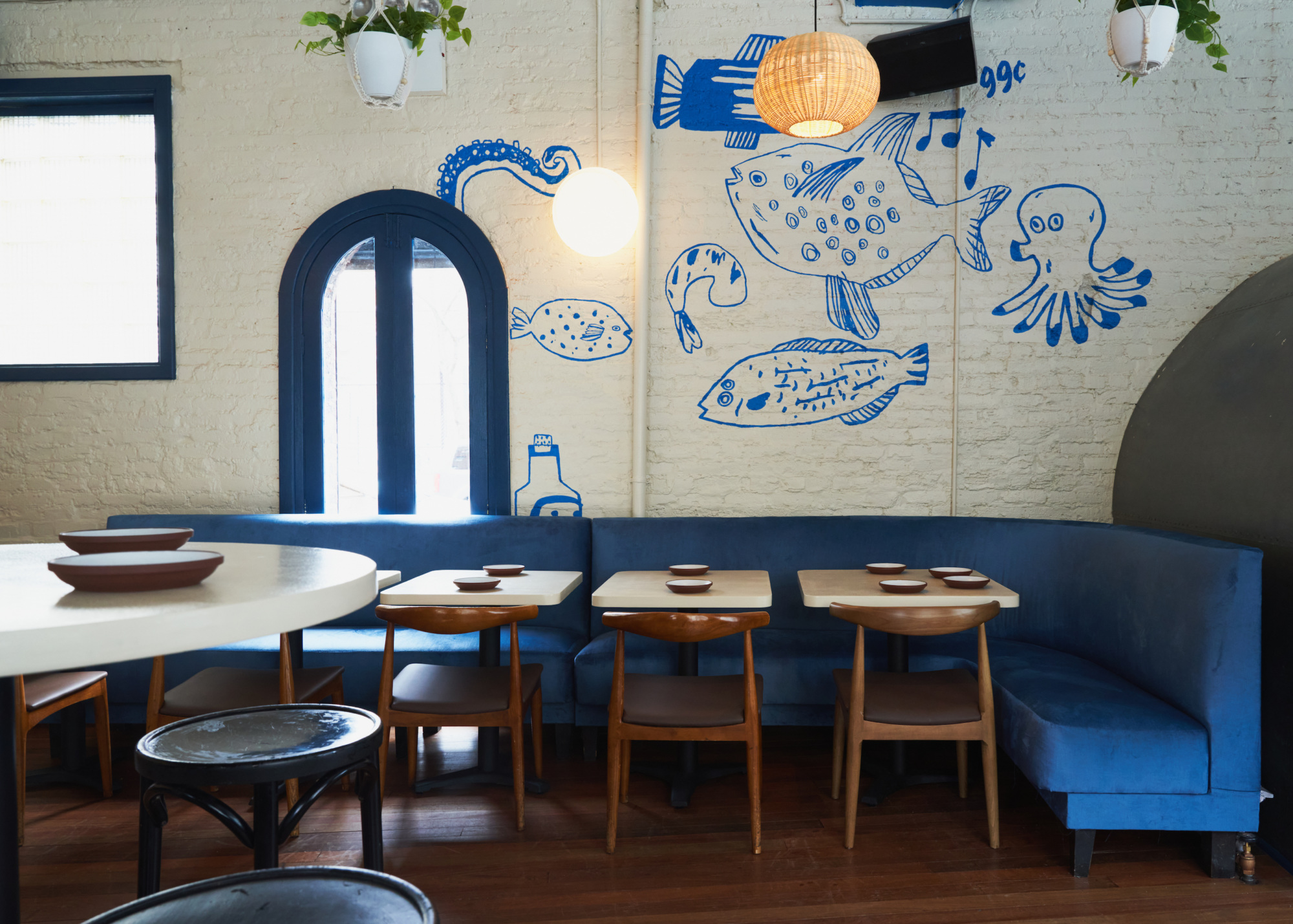
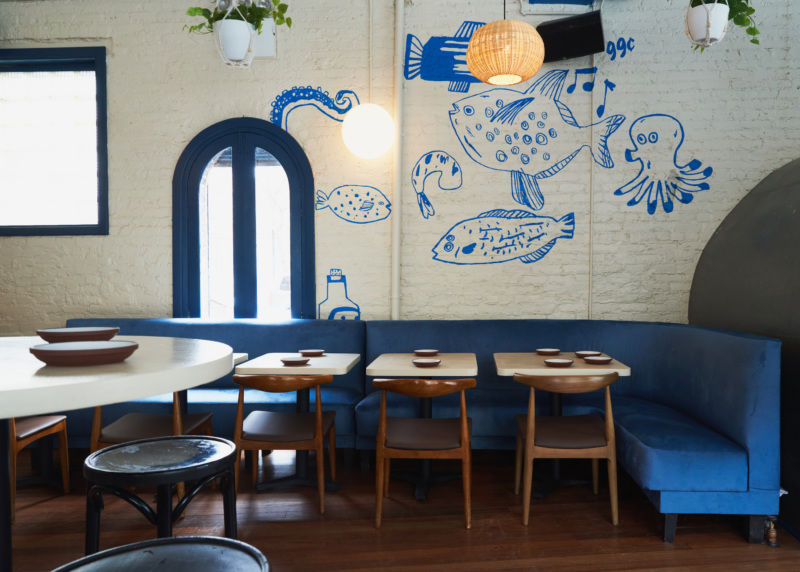
The food on Ensenada’s small, curated menu is loose and fun without sticking to any particular tradition. An octopus tlayuda arrives piled with peppery greens, the crunch contrasting with the black beans and fish asiento underneath. One aguachile swims in a juice made with the popular Peruvian chile aji amarillo, and turmeric and lemongrass. The yellow mole, served with a deep-fried skate wing, melds traditional Oaxacan chiles and Thai curry paste.
Herrera says the change to stray from traditional Mexican seafood recipes happened organically. He says it was exciting to have the freedom to draw from a wide swath of flavors that interest him, with the thread being that they’re all present in New York.
“We live in a city that’s such a melting pot. I’m learning by going out to eat,” Herrera says. “I go to a Thai place in Elmhurst, I go eat Peruvian food in Jackson Heights, or aguachiles also in Jackson Heights; you have all the reference you need in the same city and I think that’s so rare.”
Here’s a look at five signature dishes from the Ensenada menu, and what led Herrera to create them, in his own words.
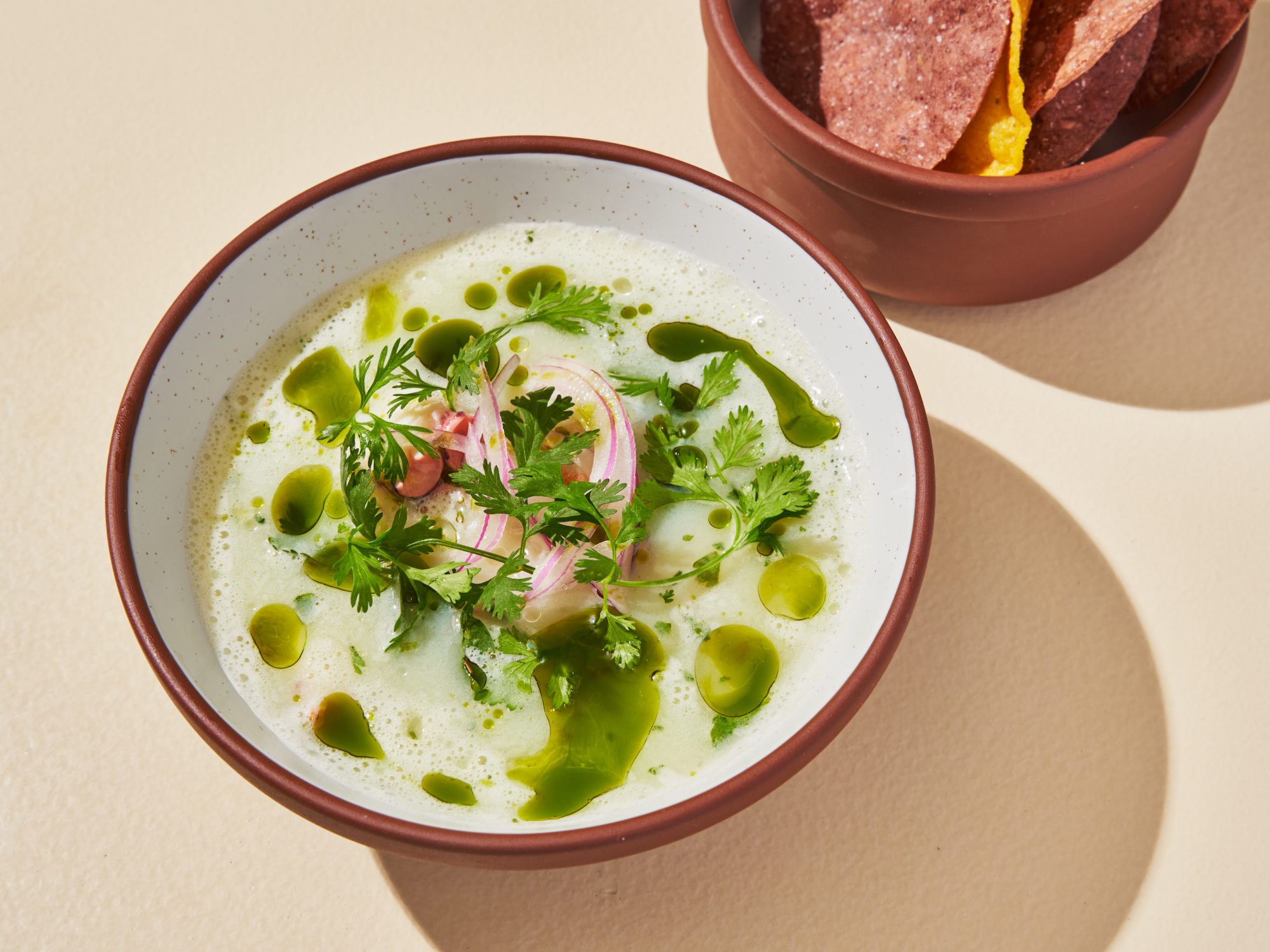
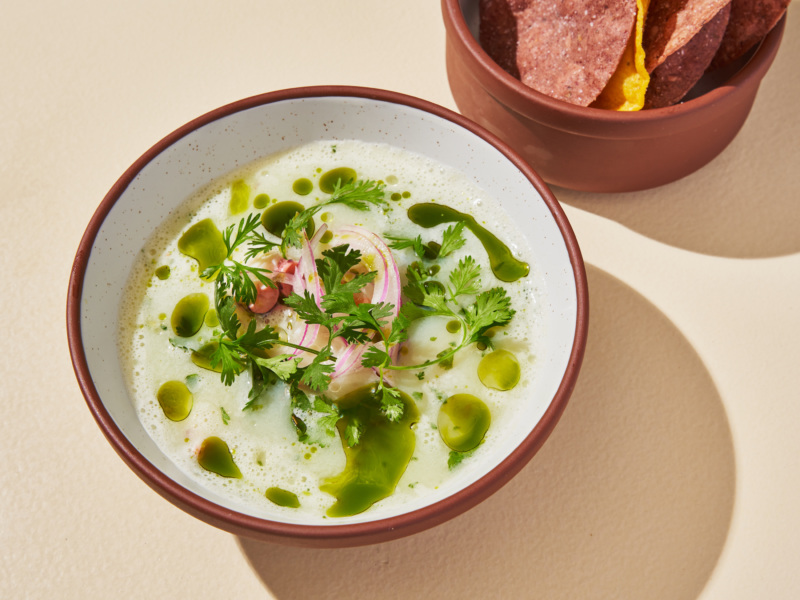
1. Ceviche Tradicional
“When I went to culinary school in Venezuela, surprisingly enough this is one of the first things they teach you. It’s leche de tigre based. I love the concept of leche de tigre — it’s basically all the elements that the ceviche has, blended into a juice. You have red onions, you have a little bit of garlic, and you have some kind of pepper. In this case, I’m using serrano peppers but in the summer, I use aji dulce: It’s the base of Peruvian cooking, a sweet pepper that has the taste of habanero but without the heat. I find it in the farmer’s market and at Eckerton Hill Farm in Pennsylvania. I buy 100 to 200 pounds and make a paste and ferment it, so I have it for six months after the season is over. I think one of the most interesting things about it is that into that juice, you blend pieces of the same protein you’re using. It’s called leche de tigre because it appears milky — the protein thickens the broth up and makes it look kind of white. You quickly cure the fish or shrimp in the lime juice, with a little bit of salt, and then mix with the juice. You add a little bit of the peppers, a little bit of sliced red onion. I add cilantro for presentation. That comes with tostadas on the side that we’re getting from my friends at Sobre Masa and that’s it. It’s a very simple dish, but in my opinion, I think it’s a crowd pleaser. This one is more forgiving than an aguachile. It’s a fresh, very tart, sour dish.”
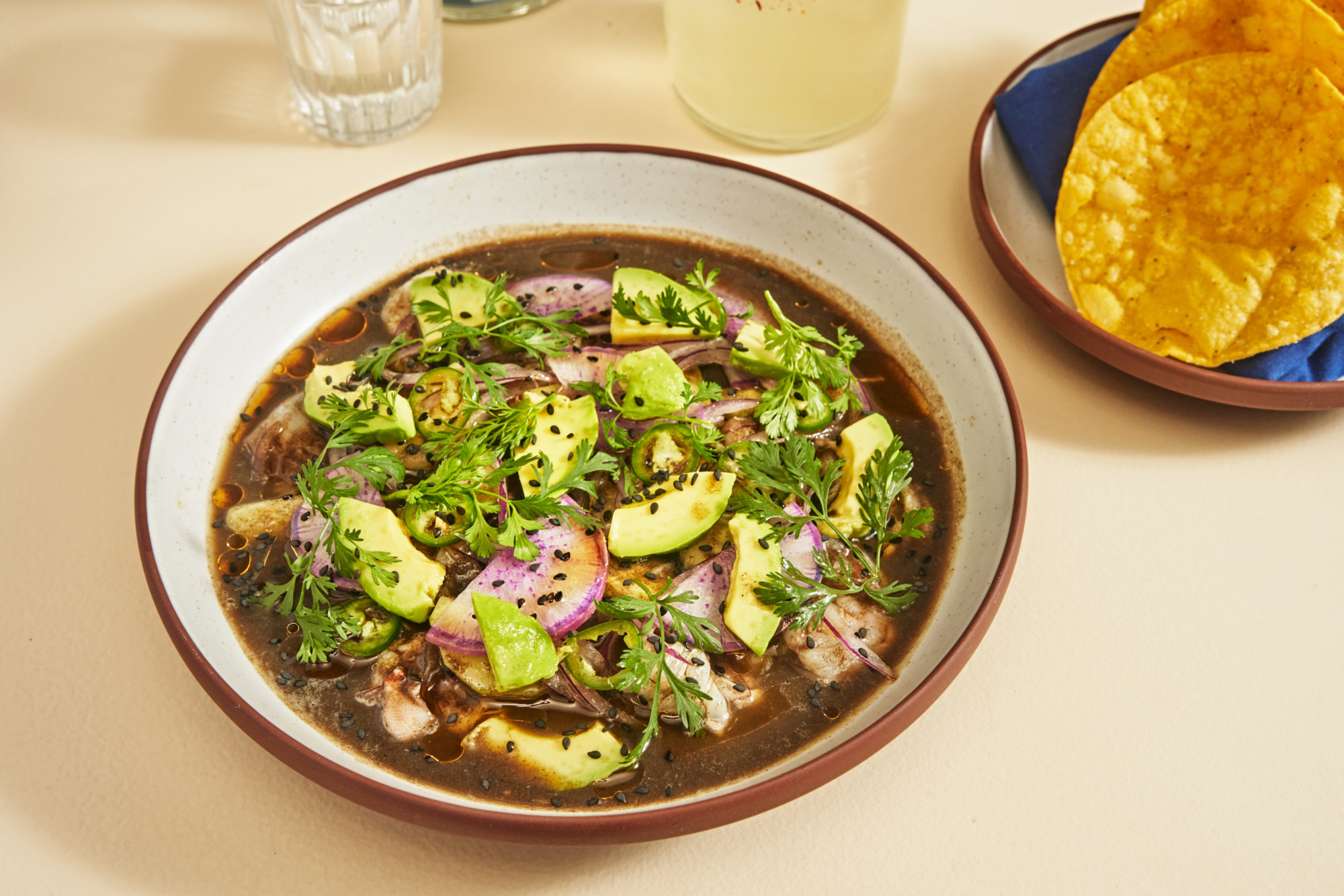
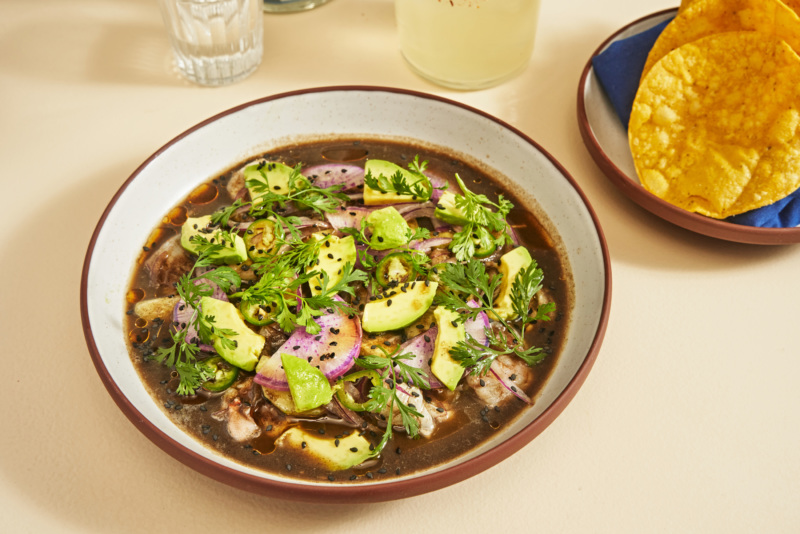
2. Aguachile Negro
“I think this is my favorite dish on the menu. It’s been my favorite ever since I tried it in Mexico City at a place called Mi Compa Chava for the first time. I’ve seen dozens of different recipes. Before we opened the restaurant, I knew this was a recipe that I wanted to come up with on my own, and to make it a dark black shade. From my time at Cosme, there’s this thing called recado negro that’s basically like a mole, where you burn everything. There’s another mole called chichilo that’s very ashy. So, I took that as a common thread and went from there to try and come up with this very dark aguachile. I wanted it to be strong in flavor but not too bitter, which can sometimes happen with the chichilo. I burn the tortillas with a torch, almost so they turn to ash, and I blanch them in water for about four or five times to lose that bitterness. That was my color base. And I use habanero, which makes it the spiciest aguachile on the menu. And as they do in Sinaloa, I’m using soy sauce, Worcestershire sauce, and Maggi seasoning as well. It’s one of the most intense, most umami aguachiles that we have on the menu.”
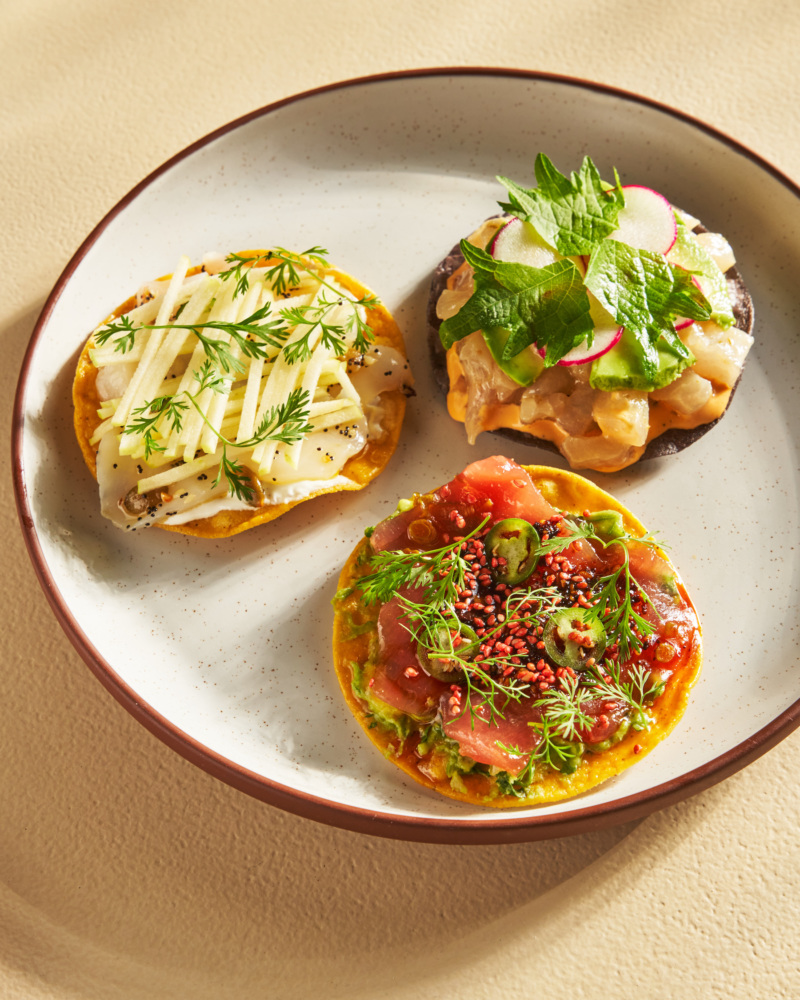

3. Tostada Trio
“When we opened, we only started with one tostada. Now we’re offering them as a trio, which is interesting because they’re all very different. I’ve always loved the tuna tostada from Contramar in Mexico City. That restaurant is also an inspiration for what we wanted to do at Ensenada, so we came up with our own. It’s more New York. The tuna gets sliced and dressed in soy sauce, oil, and scallions. We dress it with a little salsa macha that we make here. I use pasilla mixe, it’s a smoked chile that comes from Oaxaca that has a very particular smoky flavor, and a little bit of regular pasilla, sesame seeds, and sesame oil as well. It gives you this vibe of Asian and Japanese flavor profiles. To finish we dress it with these plum coated sesame seeds which I get from my friends at SOS Chefs.
“The scallop tostada has a base of labneh. The tartness, creaminess, and fattiness pairs really well with the scallop. They’re sliced raw and dressed with lime juice and a sauce we make in house that I call salsa seca, that consists of different seeds that are fried in olive oil. I top it with jicama and green apple. Half of my family on my mom’s side is Italian and I grew up eating a lot of Italian food, so this is inspired by that. It’s very Mediterranean, this tostada.
“The third one has fermented aioli as a base — I was getting a lot of aji dulce from the farmer’s market, so I started fermenting a lot of it. The fluke is cut in cubes and dressed with a ponzu. I make a dashi broth, and mix it with white soy sauce and lime juice and a little yuzu, and that’s the dressing for the fluke. It has avocado slices, radishes, some shiso leaves on top. The trio works really well. You have the tuna that’s 100% Mexican, the scallop one that takes you more to the Mediterranean, and the fluke tostada that almost feels as if you were having a poke bowl, which I love.”
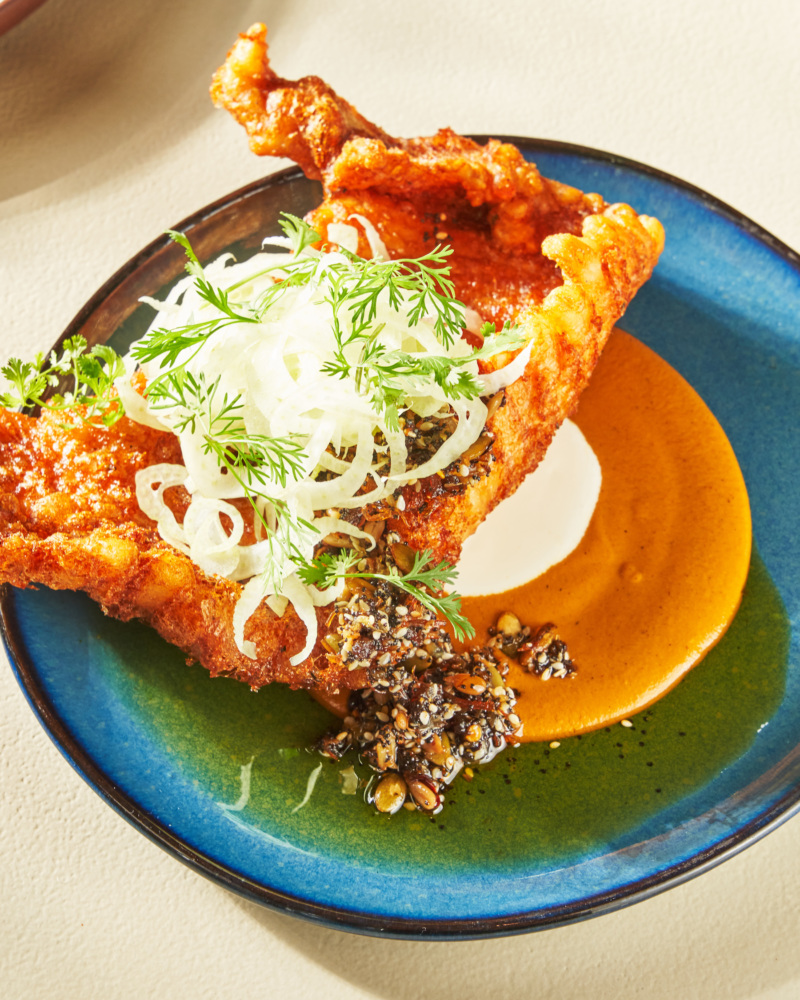

4. Deep Fried Skate Wing
“Out of the entrees right now, this is my favorite. This is the same batter that we use for the fish tacos — a gluten-free batter that’s made with rice flour. I use Topochico as the sparkling agent, and a little mezcal as the alcoholic agent, so when you fry it, it gets very crispy. It comes with a yellow mole that’s inspired by my time in Cosme. It’s a very traditional mole from Oaxaca, so we use specific chiles from that region: the chilhuacle amarillo, the chilcostle, a little guajillo. I wanted to do a mix between a mole and a Thai curry, which is one of my favorite foods. So I added a little turmeric and ginger and curry paste. It’s kind of a hybrid.
“Skate for me is a very inexpensive fish and it’s just so good however you cook it. You get this flaky, very juicy, but also tender, light texture. It’s almost like chicken but way softer and way more buttery. It think this is a dish that’s going to be around for a long time on the menu, but it’s going to change depending on the season.”
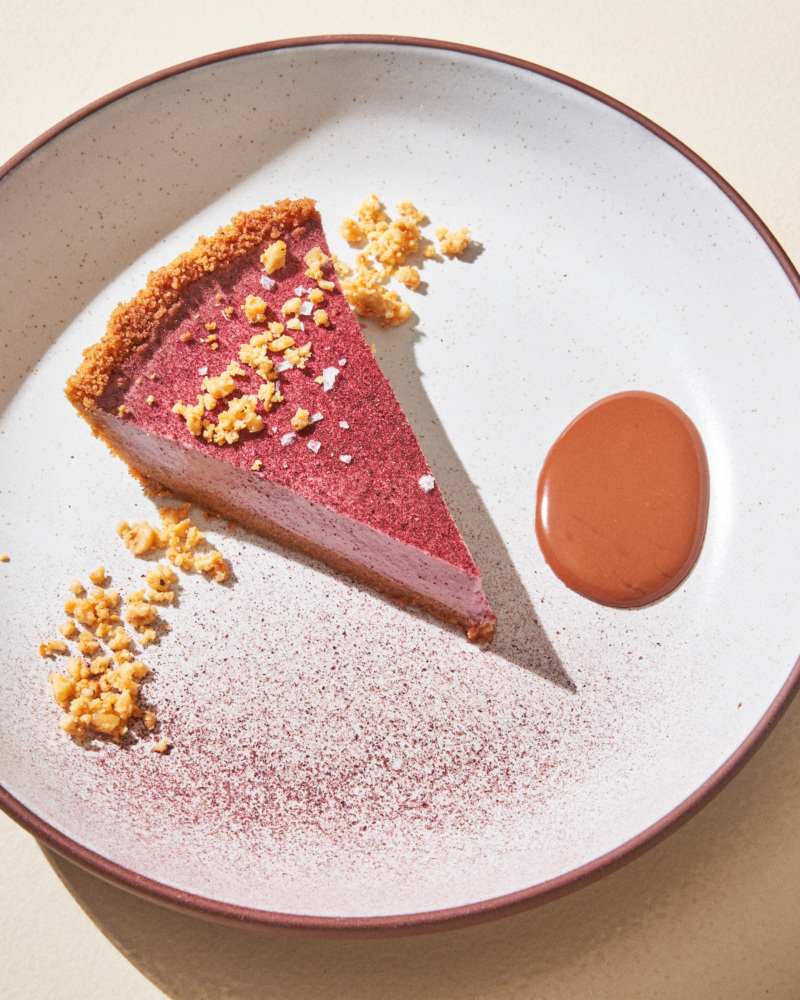

5. Hibiscus Tart
“I’m not a big pastry guy, but we only have one dessert in-house and it’s this one. I wanted to reuse a Mexican ingredient — or you know, Latin American, as we also use hibiscus — so I came up with this tart where I use Maria cookies as the crust; it’s Maria cookies and butter. I compare it to graham crackers here. Whenever we make a pie that needs a cookie crust, we use Maria cookies. So that’s the base. I make a very concentrated hibiscus tea and then mix it with heavy cream, condensed milk, and gelatin, and it sets. I use Maldon salt on top, more hibiscus powder to give it more tartness, crushed hazelnuts on top, and a little chocolate ganache at the bottom to balance out the tartness of the tart. It’s a very simple dish that people are amazed by. But it’s so easy to make. People have loved it in the restaurant, so it’s not going anywhere anytime soon.”
Ensenada is open Tuesdays through Saturdays from 5:30 to 10:30 p.m.
Lesley Téllez is a writer in New York City and the author of Eat Mexico: Recipes from Mexico City’s Streets, Markets and Fondas. Follow her on Instagram or through her newsletter. Follow Resy, too.
Discover More

Stephen Satterfield's Corner Table
















